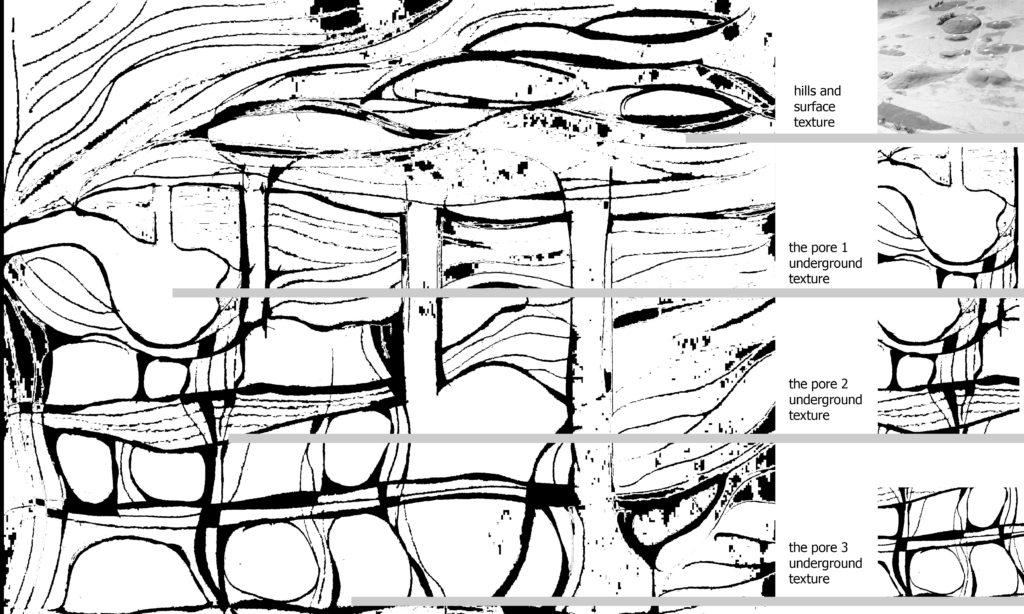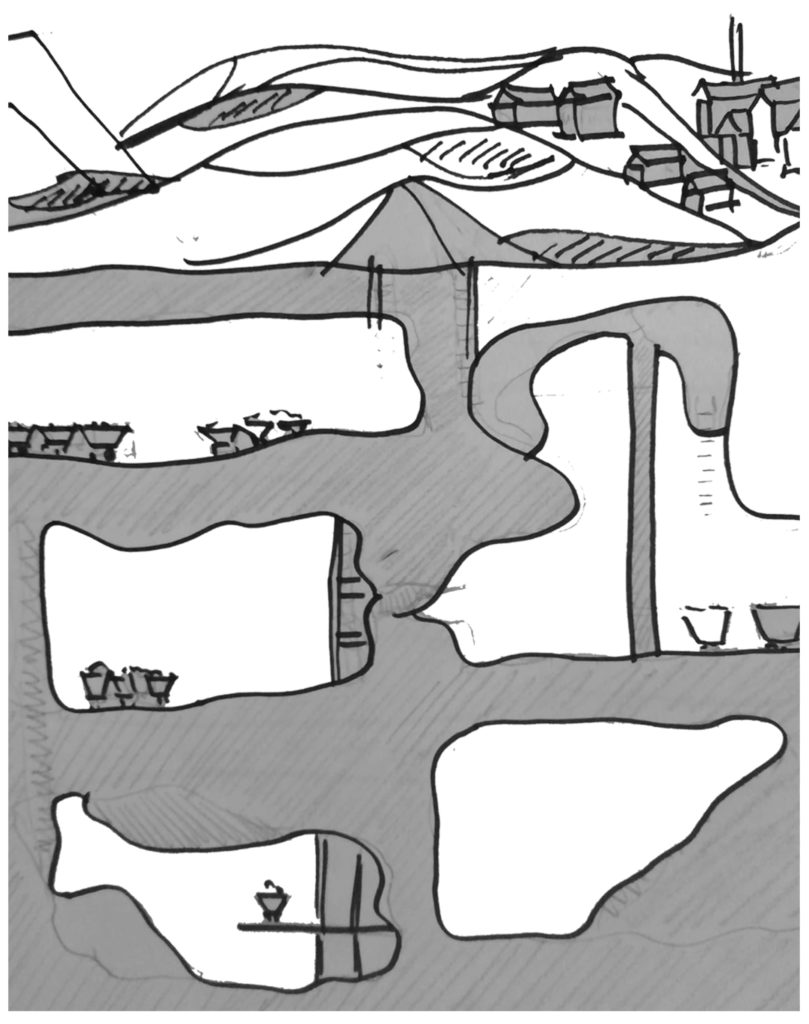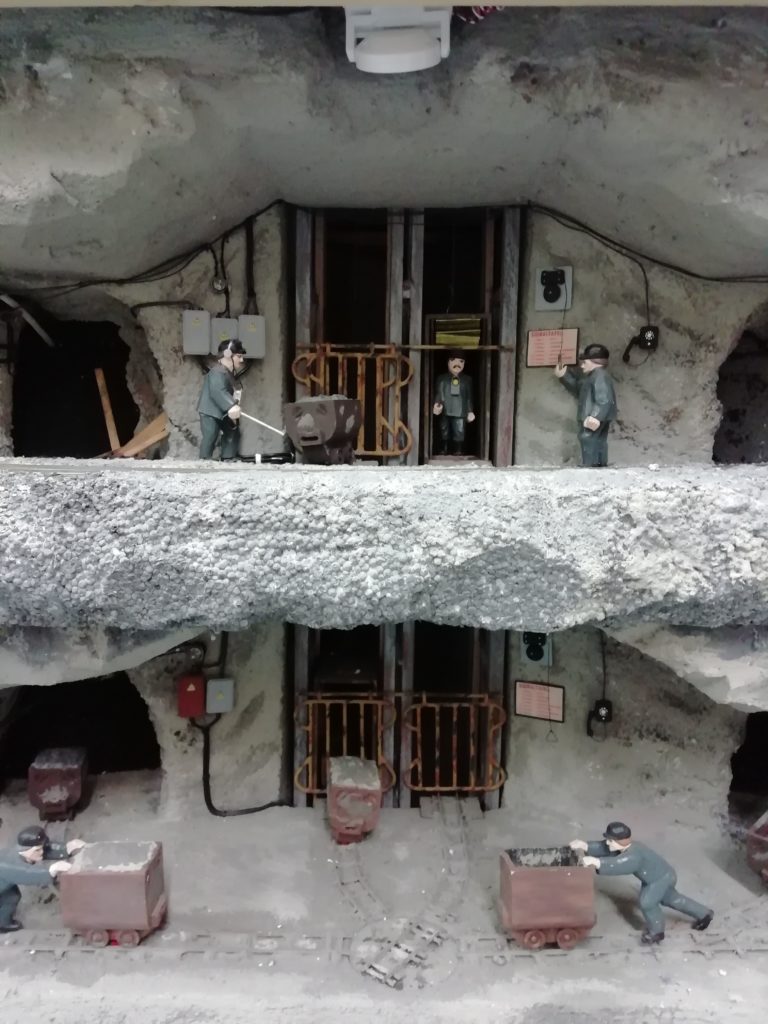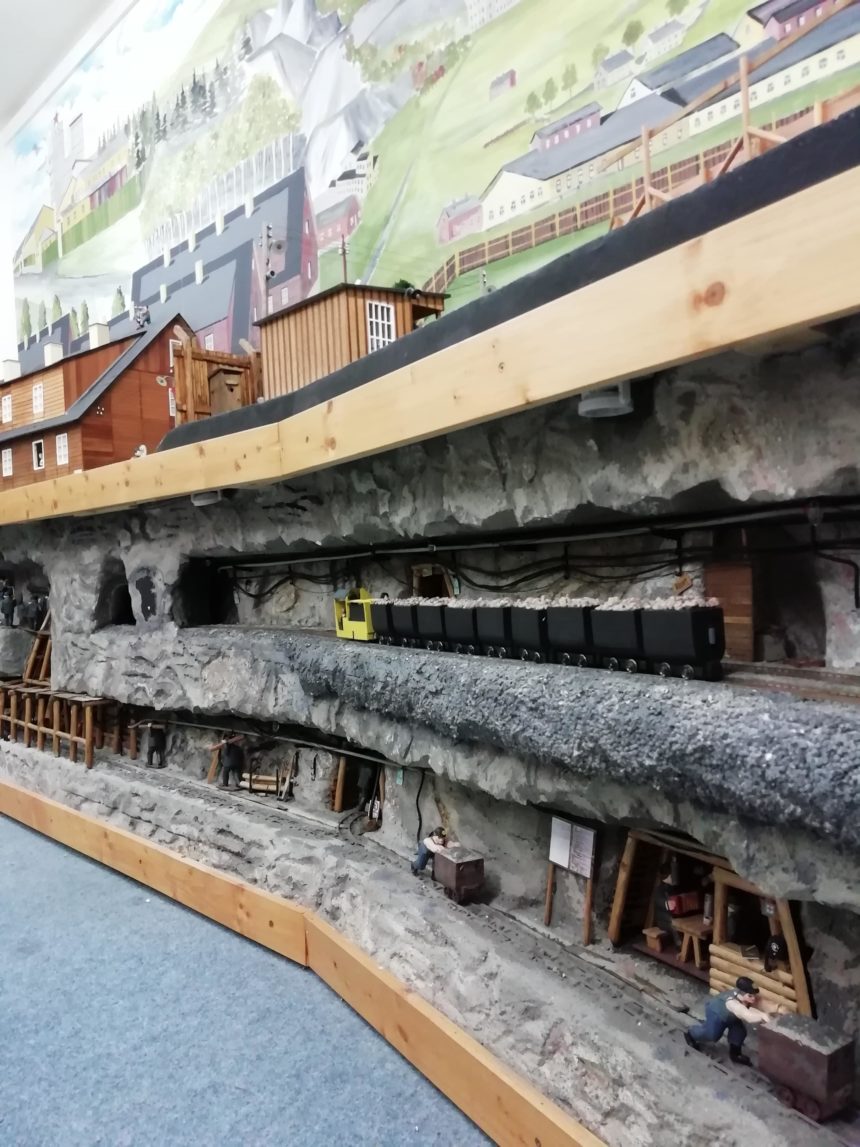I have seen many industrial landscapes; they always impress me with their man-made characteristics and their adaptability throughout time. However, the term ‘porosity’ as a description of such landscapes has never come to my mind before my trip to Ore Mountains in Germany. I like to tag a city or a place using a descriptive concept as a key word to memorise it or to define it to others who have never seen it before. In this piece, I would like to describe the Ore Mountains and its porous landscape and invite those who are interested to imagine it through my words.
When you look at this amazing historic landscape, the first thing that you might notice is the artificial hills distributed within a huge number of green areas, as well as constructed parts of the region. One might link them with the construction activities if he or she does not know the historical development of the place, but for me, they are the signs of something indigenous that might describe this landscape, such as a historic tumulus in Anatolia that hides a long history of the humankind under it to discover. Then, I decided how I would remember this landscape and the places I visited in the Ore Mountains; the concept of ‘porosity’ would be the best metaphor to tag it in order to describe the landscape characteristics to others.

The first interface: indented texture and landscape surface
I would like to start with the texture that defines the landscape, which was my first impression. If you look at the entire surface of the landscape on the models exhibited in the museums, you will recognise there are artificial patchwork parts in a different texture. Then, when you become acquainted with the indigenous logic of the place, which is rooted in the mining activities, then you will dive into the huge fascinating underground part of the landscape. They complete each other by constituting this unique porous landscape, in which each pore represents different eras in the history. The texture that defines the surface is the current layer, and it has been shaped based on not only the contemporary needs and technology, but also the historical pores lying underground.
Diving into vertical porosity of the landscape

The important characteristics of the vertical porosity of the landscape are the communicative interplay between inside and outside, past and present, old and new, previous minerals and new discoveries in mining culture in the course of the time. In fact, each pore that constitutes the vertical porosity of landscape originates from the minerals discovered gradually in this area. According to the local narrative, which can be easily found in either cafés or museums, after the discovery of silver, cobalt was found in this landscape, which was the milestone for many arts and crafts in Europe as it enabled the manufacture of cobalt-blue pigment. Then, nickel, zink, iron and copper were the other following minerals found, constituting the other pores of the vertical porous section of the landscape. Fake silver and bismuth — wismut in local language — followed the previous ones in later years by increasing the porosity level underground, which led to different socio-cultural facts.
Each mineral found in this region has created a cheese-like pore underground due to the constructed working environments under the earth, which turned the space into a kind of vertical underground city. Anyone might imagine the density of life in this historic underground landscape if you do not look at the place under the lens of ‘porosity’. Let’s go deeper to better perceive this fascinating porous vertical underground city that was the result of free mining activities, freely searching for new minerals and free local people as a living entity.

The impressive part of this piece of the story for me was that the landscape is defined based on the duality between those natural and man-made pores, and it has evolved organically, guided by the locals using those mineral potentials through the course of time. Thus, it has been not only guided by the industry and further related developments, but also guided the industry and tradition by readapting and transforming until today. That’s why I would like to tag the landscape as cheese-like porous, which means that the landscape is quite flexible, and its porosity is in constant transformation.
The Second Interface: Inverse structured porosity
While the discovered minerals have been the natural origins of each pore, they have also caused the creation of new pores or infilled pores in the course of the time. Thus, the landscape’s capacity to adapt and readapt to the natural flow of the time makes this place a porous living entity. It is formed by the mining layers underground, man-made planted areas for wood-carving and urban spaces that have been shaped by the porosity dynamics of the Erzgebirge culture through time and the urban texture. Now let’s have a look at those newly created, adapted, and infilled pores.
The region’s modern, land-based urban infrastructures, including roads, railways, houses, social and cultural edifices, have been shaped according to the porosity characteristics of the landscape, diminishing or increasing those pores depending on the urban area. For example, where there is a high urban density, the porosity level of the terrain is automatically kept at a minimum to prevent decay. This necessity requires the infilled pores for these areas to provide the healthy supporting infrastructure of the edifices, readapting the land according to the new layers and ongoing zeitgeist. That’s why we see patchwork-like surface texture on the landscape in the current condition.
Let’s go back to when the mining activities — particularly the uranium mining — were terminated in the region at the end of the 1990s. At the time, the environment was completely devastated by years of mining. Then, rehabilitation gained importance, the devastation was stopped and the damaged part of the landscape was recovered. Filling the pores was one of the actions transforming the porosity texture.
Concluding with Flexible Pores and constant transformation
The Ore Mountains’ porous landscape is in constant transformation according to the needs of the time. It would not be surprising if the density levels of the pores are always diverse. The fascinating part of this piece of story is not only the landscape’s potential and particularity but also its direct influence in social and cultural spheres constituting the spirit of the place. I would like to invite the visitors to closely observe the living cultural and urban pores which still exist either transformed or conserved.
XXXXXXXXXXXXXXXXX